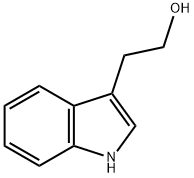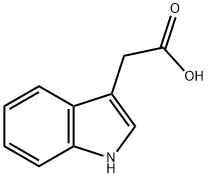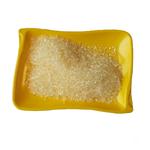Chemical Properties
3-(2-Hydroxyethyl)indole [526-55-6], tryptophol, C10H11NO, Mr 161.20, mp 59 ℃, bp 174 ℃, (2 kPa) forms colorless prisms or flakes that are readily soluble in methanol, ethanol, diethyl ether, chloroform, and acetone, soluble in benzene, and slightly soluble in water. It is produced by reacting methyl-1H-indole-3-acetate with lithium aluminum hydride, or through reduction of methyl-1H-indole-3-glyoxylate with sodium borohydride. The antihypertensive Indoramin is produced from tryptophol.
Uses
Reactant for preparation of:
- Inhibitors of the C-terminal domain of RNA polymerase II and their antitumor activities
- Anti-HIV-1 agents
- Inhibitors of Protein-Protein Interactions
- Partial agonists of the serotonin 5-HT1A receptor
- Growth hormone secretagogues
- Vascular endothelial growth factor (VEGF) inhibitors
- A2B adenosine receptor ligands
- Potential detoxification inhibitors of the crucifer phytoalexin brassinin
- Inhibitors of interleukine 6
- Dual binding site acetylcholinesterase inhibitors
Uses
Tryptophol is a metabolite formed in the liver after disulfiram treatment that induces sleep in humans. It is also a secondary product of alcoholic fermentation.
Definition
ChEBI: An indolyl alcohol that is ethanol substituted by a 1H-indol-3-yl group at position 2.
Synthesis Reference(s)
Canadian Journal of Chemistry, 42, p. 485, 1964
DOI: 10.1139/v64-070
Purification Methods
Crystallise it from diethyl ether/pet ether, *C6H6, *C6H6/pet ether. The picrate has m 100-101o (from *C6H6). [Beilstein 21 I 218, 21 II 49, 21 III/IV 788, 21/3 V 61.]





